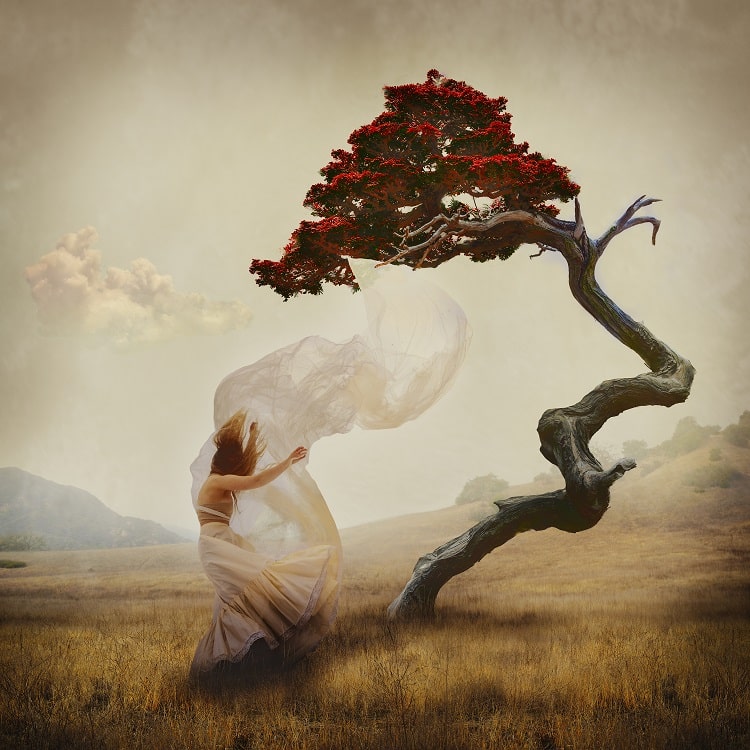
10+ Essential Questions Answered by the World’s Most Respected Photographers
Learn how the world’s best photographers shoot, think, and create — and how you can too.
Image above: © Brooke Shaden – Surging tides
Photographer Spotlight: Brooke Shaden
Conceptual Fine Art Photographer, Mixed Media Artist, Writer
Brooke Shaden is a celebrated fine art photographer and mixed media artist known for her emotionally rich, conceptual self-portraiture. With a background in English Literature and Filmmaking, Brooke blends visual storytelling with deep introspection, creating images that explore themes of mortality, grief, and transformation. Raised in Lancaster, Pennsylvania, she found her creative voice early on through a fascination with the beauty and darkness of life — a duality that continues to shape her work. Many of Brooke’s images are created on location, as her passion is as much for the art as the process of being in nature and integrating her surroundings in Northern Arizona.
Since 2009, Brooke has not only built a powerful body of artistic work but has also become a guiding force for emerging photographers seeking meaning in their craft.
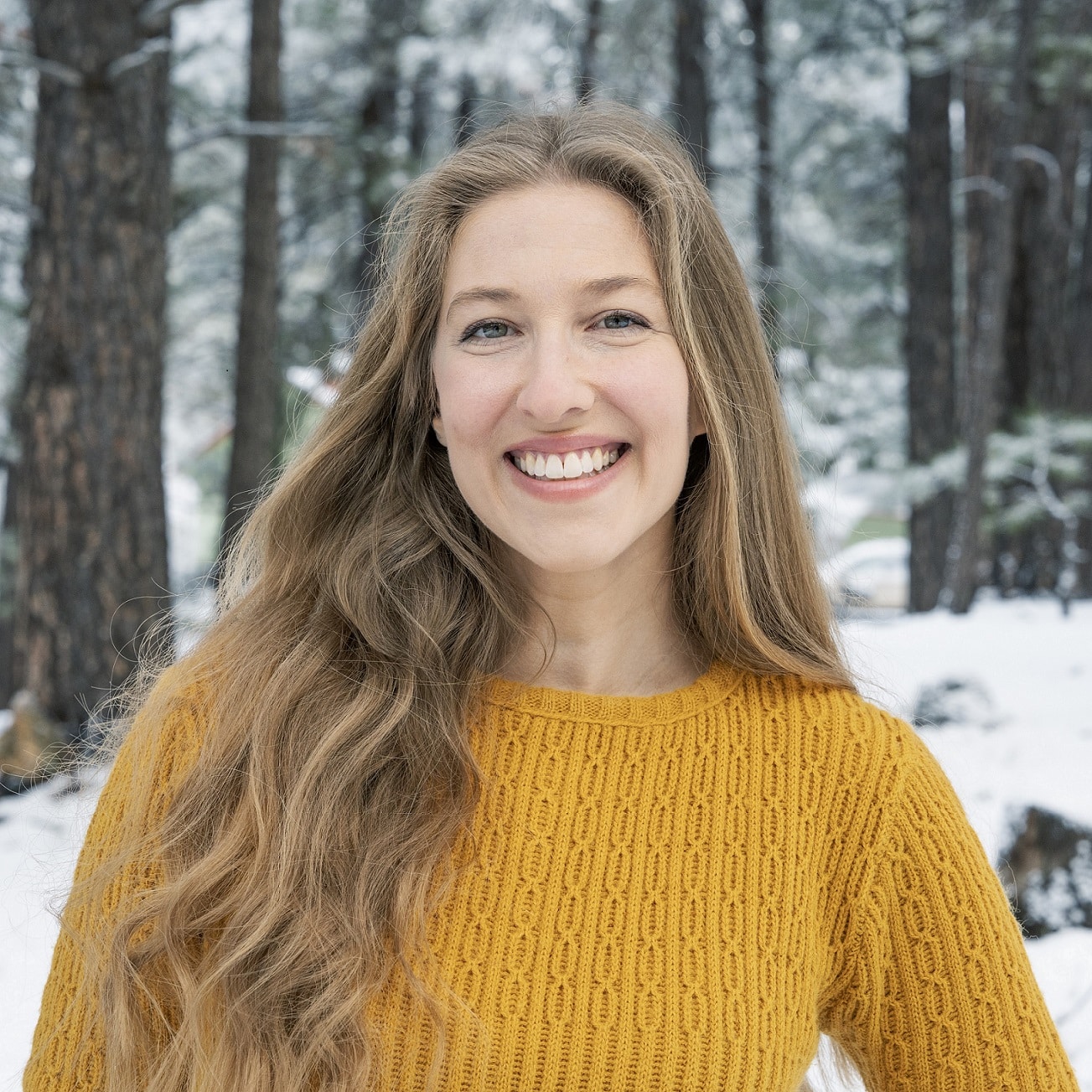
Her art serves as a channel for healing and reflection, and she’s deeply committed to building creative communities. Check Promoting Passion, an annual conference focused on creativity, legacy, and purpose that she founded.
Brooke’s work is represented by five galleries and held in museum collections. With sponsorships from brands like Sony and Microsoft and recognition such as Photographer of the Year and a Top 10 Most Influential Photographer title, she has inspired countless photographers around the world.
Whether she’s behind the camera, on stage, or writing fiction, Brooke Shaden continues to create with profound empathy and purpose — reminding us that art has the power to heal, connect, and transform.
Q&A with Brooke Shaden
Vision & Purpose
What is your ultimate aim in photography? What are you hoping to express or achieve through your work?
To destigmatize grief and create a grief positive movement. Before I ever picked up a camera, I knew my goal of whatever art I made would be to find beauty in darkness because I’d always seen dark things as beautiful. When I realized others didn’t see what I saw, coupled with how much people suffer through grief, I began creating disturbing yet ethereal images.
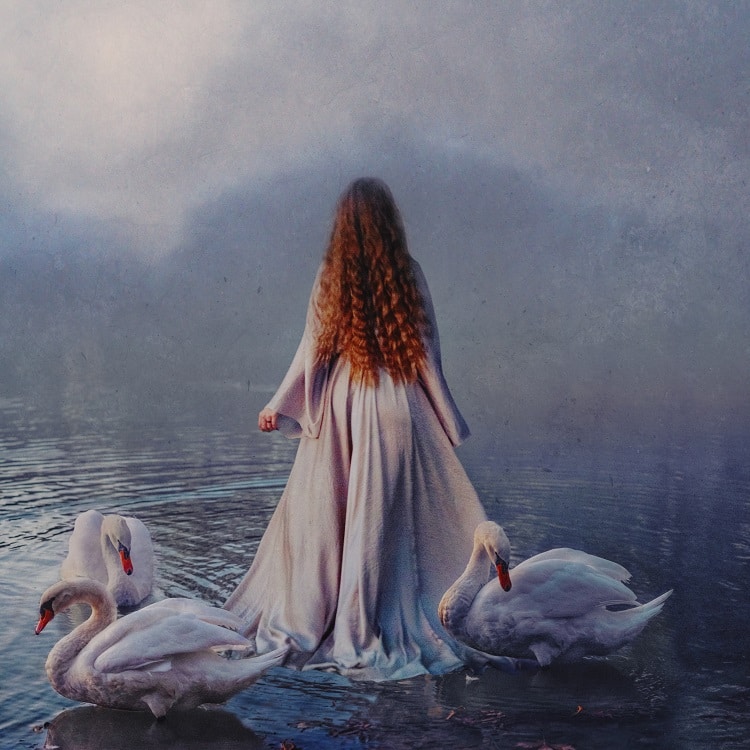
© Brooke Shaden – In a faraway place
How do you hope your photographs make people feel? Is there a particular emotion or response you’re often aiming to evoke?
I want my images to be a portal for people to explore their own grief and mortality through the lens of visual symbolism and storytelling. Often, viewers are immediately shocked or even repelled by my work, and that’s a valid reaction; but beyond that, I aim to draw viewers in deeper to discover something true about themselves in the images.
Inspiration and Influence
Which books, exhibitions, or fellow photographers have had the biggest impact on how you see the world through your lens?
Much of the creativity I possess now was validated by the writing and cinema I experienced in my teens. Books like Dune by Frank Herbert gave voice to the complex ideas around legacy that I’ve long been obsessed with. Movies like Pan’s Labyrinth gave me a visual mood board that finally matched the way I see the world.
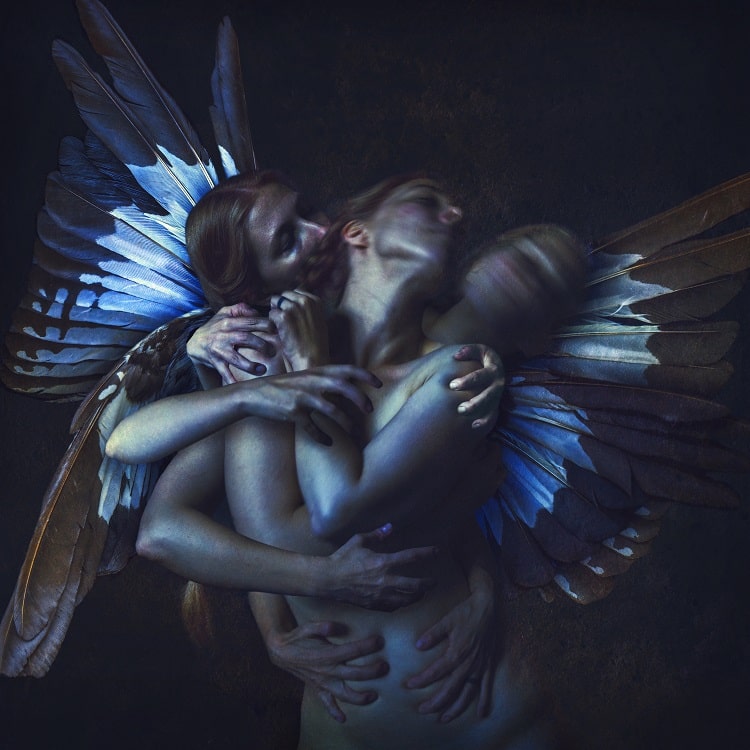
© Brooke Shaden – Anteros
Many photographers strive to develop a unique style or voice. What practical steps helped you discover your own, or do you believe a distinct style is even necessary?
Honesty is perhaps the single most important thing in discovering your voice and style. Rather than creating what you think you’re supposed to, ask yourself: If I had to focus on only one style of photography, and one idea, for an entire year, what would it be? Explore deeply what excites you. Aim to surprise yourself. When I first began photography, I did the same thing I still do every single day. I ask: What do I most need to say right now? And: What visual style best reflects the way I want to see the world?I think having a distinct style is hugely important. It’s your creative signature. That isn’t to say it shouldn’t morph and grow – it absolutely should. But I find, with the artists who impact me the most, you can draw a line from their old work to their new. They take you on the journey of their discoveries rather than seeming confused by their own trajectory.
Process and Practice
Can you walk us through the story and techniques behind one of your favorite photographs? What makes it stand out to you?
“Fallen Fruit” (2022) is a self-portrait set up with a plain background, the sky added insecondarily. All of the props and pose were shot as seen in the final product, aside from the addition of some extra hair. This is indicative of my simpler process, requiring only a couple of composited elements. “Fallen Fruit” is especially important to me because it depicts loss in a visceral, yet symbolic way. I want my work to draw the viewer in with stark visuals, yet keep them there because of symbols that run deeper. This particular piece resonated deeply with an audience that has long felt silenced in speaking about their experiences, and that is exactly what I hope my work continues to do.
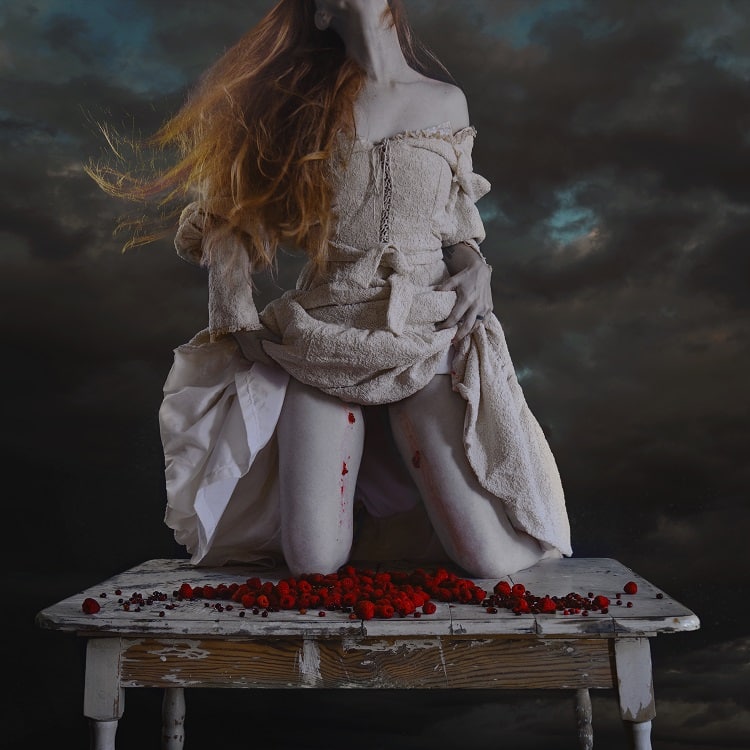
© Brooke Shaden – Fallen fruit
What photographic—or broader artistic—technique do you find yourself returning to most often, and why?
Any techniques or ideas that allow me to create a world that I feel is richer and more connected is what I strive to learn and master. For me, that means compositing many images together to create characters, locations, wardrobes, and worlds that couldn’t exist otherwise, sometimes editing together hundreds of images into a single photograph. Once the composite is finished, I work hard to ensure my images feel more like paintings, thus removing any modernity and overlaying it with a soft timelessness. To achieve this, I use layered textures as well as image softening and a very specific painterly color theory.
How do you personally recognize when a photograph you’ve taken is truly great? Whatdo you look for?
Against what I’ve always been told in fine art, which is that you should only create for yourself and never for the audience, my answer here is to equally consider my personal connection to it as well as that of an audience. I believe art is at its best when the creator considers who the art is for, and my art is created for others as much, if not more, than for myself. I consider an image great when I’ve managed to alchemize a very personal story into something universal that resonates with people who have no connection to my life. As for what to look for, visually, I stop editing when the image looks like the world I wish I lived in.
Gear
What’s a piece of gear you didn’t expect to love—but now never leave behind?
When it comes to cameras, as long as the megapixels are there to be able to create beautiful, high resolution prints, I’m generally happy. As a Sony shooter, that has never been an issue. But now, with the Sony A7RV’s flip screen, as silly as it sounds, I never leave that camera behind. It’s the perfect fine art tool that lets me create large scale prints at the highest quality, and as a self-portrait artist, that little feature of a flip screen makes all the difference…especially when I’m outside in 10 degree weather trying to be the photographer and model all at once.
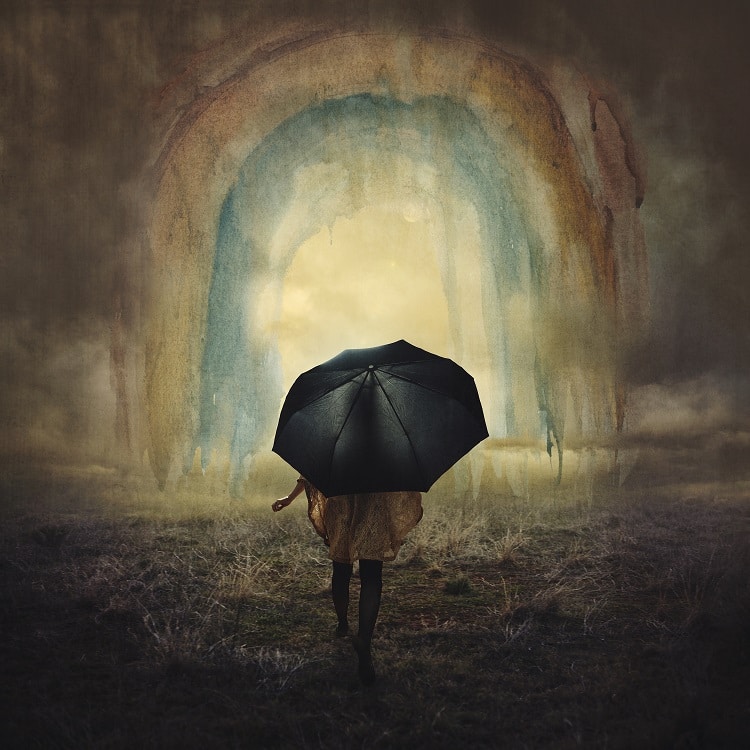
© Brooke Shaden – In service to joy
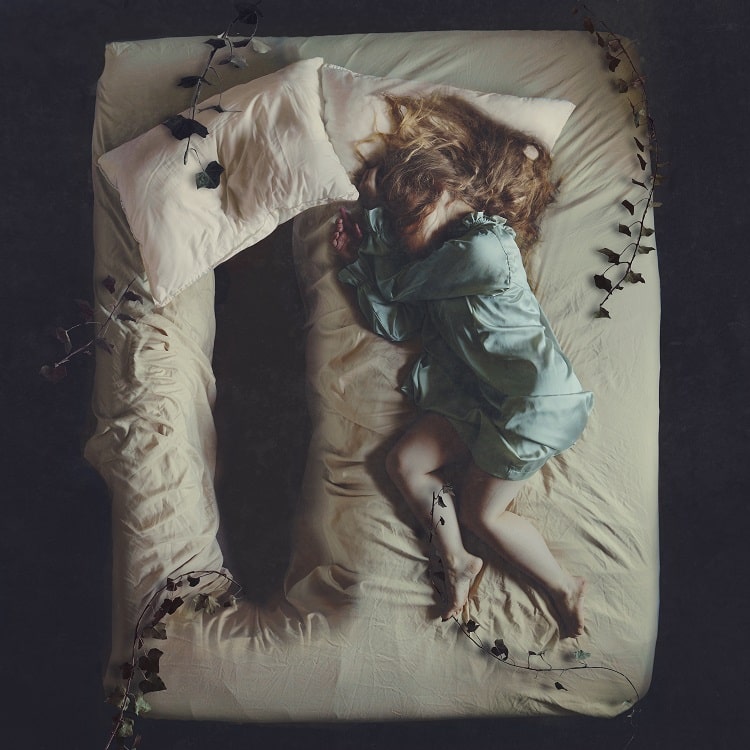
© Brooke Shaden – Little deaths
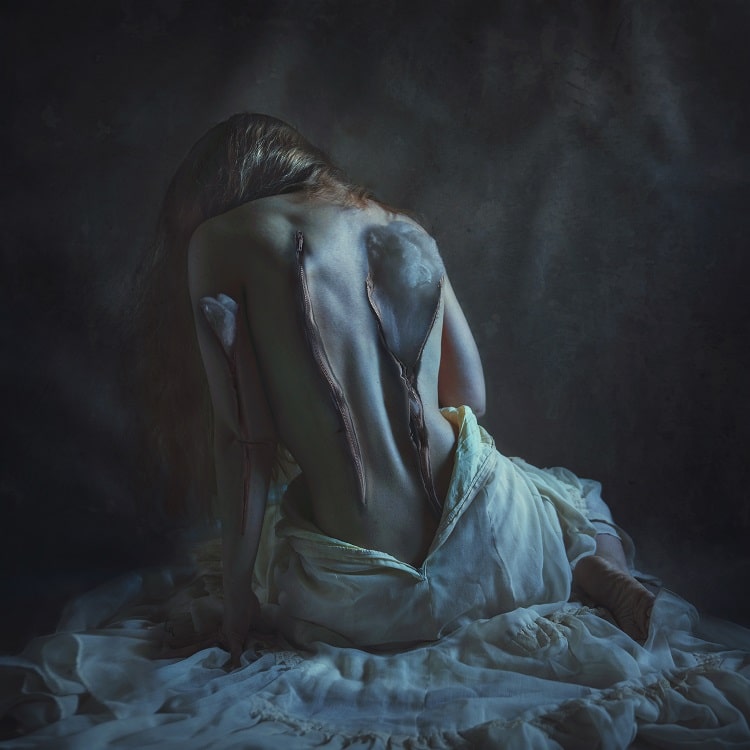
© Brooke Shaden – Ragdoll
Growth
Was there a particular mindset shift, technique, or experience that accelerated your learning more than anything else?
The very first time I ever created an image set the tone for my entire career. It was 2009 and I had a vision for the image I wanted to create: A shot with me repeated twice in the image, one of me handing a ball of light to the other. The problem? I’d never shot an image before, nor used
Photoshop. I am still self-taught in both. What gave me the courage to even try back then? It was the knowledge that certainly someone could do it, so why not me? I got to work figuring out how to clone myself in an image, how to light it, how to frame it, how to trigger my camera with a 10-second timer, and finally, how to edit it all together. It took me a week to figure out, and from that moment on, I decided I’d always live in service to the concept. If I have an idea, I know it is possible, no matter what it is. And if I don’t know how to do it? Well, that’s just because I haven’t figured it out…yet.
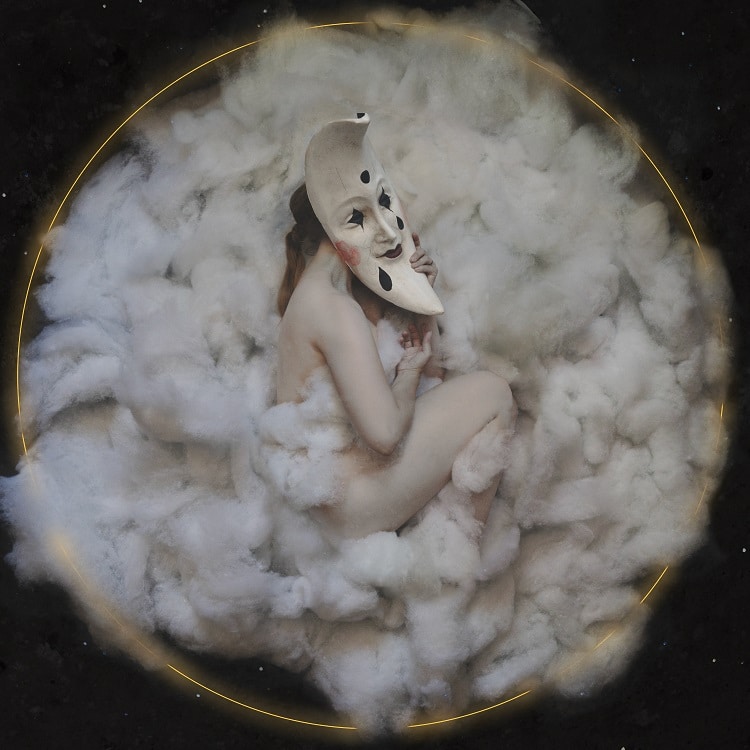
© Brooke Shaden – The living imagination
When you hit creative blocks or feel uninspired, how do you push through? Do you have any personal strategies to reignite your vision?
I fully believe that creative blocks are just bad ideas, not no ideas. We tend to think of creator’s block as being the distinct lack of all ideas. But humans are creativity machines. Ideas are
always there; they may just not be good. When I feel the tug of a block coming on, I recognize that what I’m actually feeling is the frustration of not having any new, fresh, exciting ideas, rather than the idea of having no ideas. And then I let myself make the bad ones.
It sounds counter intuitive, but if you’re putting so much pressure on yourself to create only good work, you’re taking the long way around. Your creative muse is pushing you to get the bad stuff out. It’s like creative fertilizer. Produce the shit, and let the beauty grow from it.
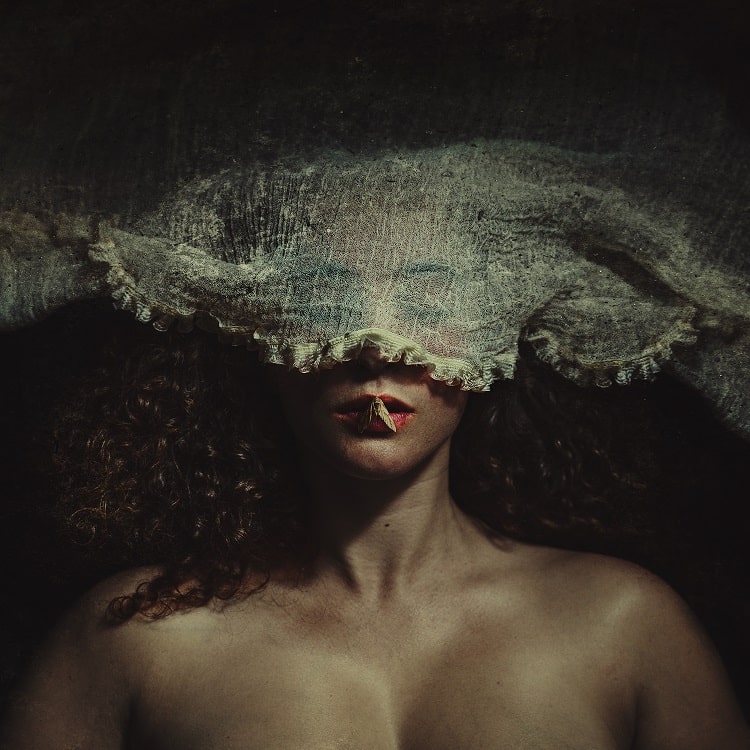
© Brooke Shaden – Whispered wings
Current work
Can you tell us about a recent or past project that you’re especially proud of, and what made it meaningful to you?
I’m currently working on a new series around impermanence and love, and how to love without ownership. This new work is inspired by my experience as a foster parent and how, over four years, I learned to love and let go of six children. The experience broke me and stretched me, and now I’m putting those pieces together to form something new: a dialogue about how ownership takes away from our capacity to love. This series is extremely meaningful to me, and I’ll be taking it on an exhibition tour in summer 2026.
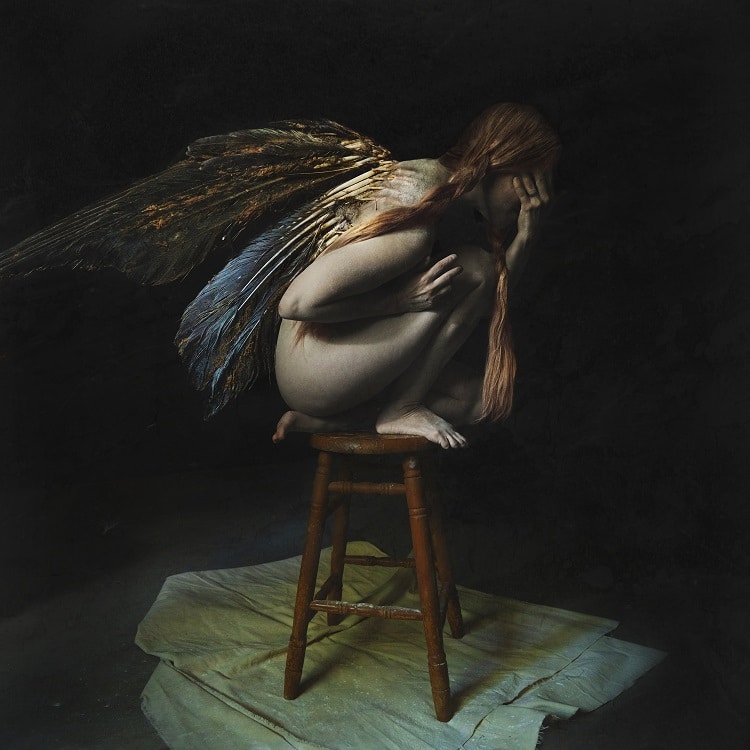
© Brooke Shaden – Wings always try to fly
Brooke Shaden’s interview and story are a powerful reminder that photography is more than a technical skill — it’s a deeply personal, transformative process. Her ability to channel emotion, grief, and healing into her art shows how photography can help us explore the unseen and speak the unspeakable. Through vision, vulnerability, and purpose, Brooke invites us all to consider not just how we take photos, but why. Brooke’s webiste can be found here: https://brookeshaden.com/
Thank you for reading and if you’ve been inspired by the interview and want to deepen your skills, mindset, and storytelling ability, we invite you to explore our full range of courses — featuring legendary photographers like Steve McCurry, Joel Meyerowitz, Albert Watson, and more. See all our courses here: https://mastersof.photography/
At Masters of Photography, we believe that learning from the world’s best is the fastest way to unlock your own creative voice!
